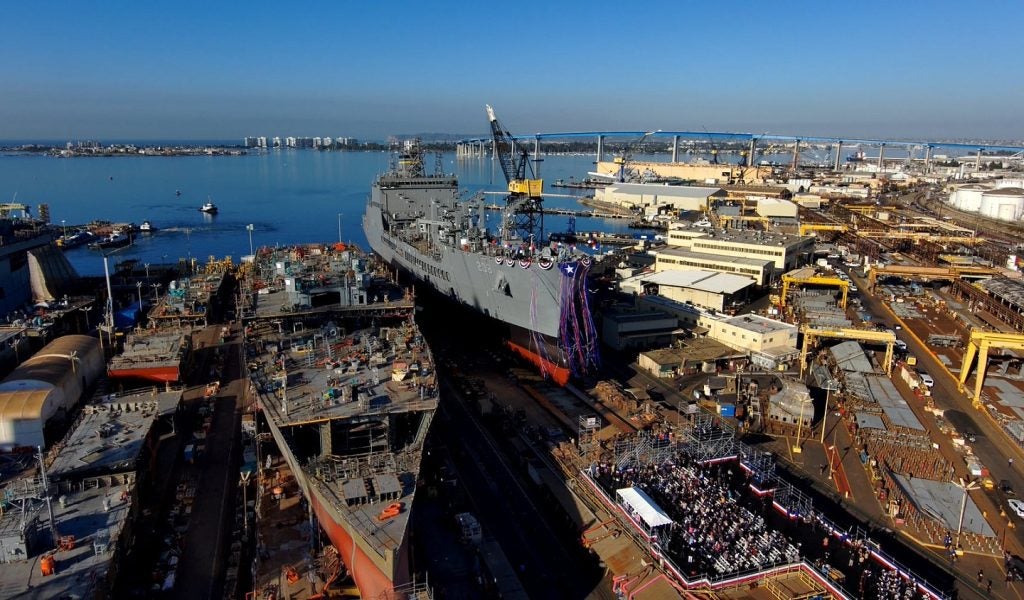The US Navy has celebrated a moment in its fleet's history as the USNS Robert F. Kennedy (T-AO 208) was christened and launched on 28 October.
The ship is named after Robert F Kennedy, a US Navy veteran who left an indelible mark on US politics and civil rights.
General Dynamics NASSCO, a shipbuilding company, marked a moment in the US Navy's fleet by constructing the fourth ship in the John Lewis-class fleet oiler programme.
The event was graced by House Speaker Emerita Nancy Pelosi, who served as the principal speaker, and Secretary of the Navy Carlos Del Toro. NASSCO representatives and guests were in attendance.
General Dynamics NASSCO, entrusted with the designing and building of the first nine ships of the next generation of fleet oilers, the John Lewis-class (T-AO 205), has crafted vessels designed to transfer fuel to US Navy carrier strike group ships while operating at sea.
These ships, stretching 742ft in length with a total load displacement of 49,850 tons, can carry 157,000 barrels of oil. Beyond fuel transport, they offer dry cargo capacity, aviation capabilities and the ability to sail up to 20 knots.
The John Lewis class has made strides recently, with the USNS John Lewis (T-AO 205) and the USNS Harvey Milk (T-AO 206) already delivered to the Navy. The newly christened USNS Robert F. Kennedy (T-AO 208) is the latest addition to this fleet.
Joining it on the horizon are the future USNS Earl Warren (T-AO 207), the future USNS Lucy Stone (T-AO 209) and the future USNS Sojourner Truth (T-AO 210), all currently under construction.
The christening and launch of the USNS Robert F. Kennedy marked a step forward in the US Navy's capabilities.
This month, General Dynamics NASSCO secured a $754m contract from the US Navy to modernise and maintain two Arleigh Burke-class destroyers, the USS Chung-Hoon and USS James E. Williams.











